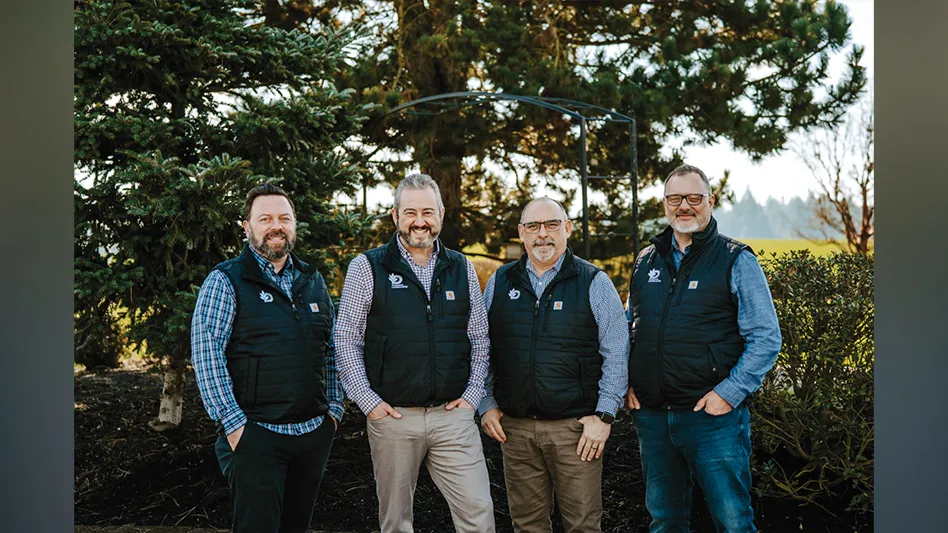The glut of spam e-mail, blogging, instant messaging, television, canned phone messages and other electronic methods of mass marketing have desensitized the American consumer to these tactics of selling. And despite all the surveys and studies into what buyers think, people don’t make purchases rationally.
Instead, they make buying decisions based upon emotion. A product or service, such as lawn care or landscaping, is either going to make the buyer “feel” better or rid him of “pain.” Sometimes, though, buyers aren’t even aware of the need that is causing this pain, and this is when face-to-face selling comes into play.
The necessity of “closing the deal” or “making the sale” is equally important to various sales professionals and small businesses owners, such as landscape contractors. Regardless of who is doing the selling or what the product and service is, face-to-face selling is much more effective than a mass marketing campaign.
Still a nonbeliever? Then consider the following items only face-to-face communication can accomplish successfully.
OVERCOME MARKETING NOISE. When you are in front of a prospect or client, you have the enviable position of having his or her complete attention. However, just like TV commercials, you still must get the buyer’s attention immediately. Therefore, enthusiasm and energy are just as important as the conviction about the merits of your service or the advantages you have over your competitors in the market. Selling face-to-face and gaining your client’s direct attention is much more powerful than being another marketing piece in a sea of envelopes.
SELL SHOES TO THE SHOEMAKER. Your presentation to potential clients can vary based on their specific and individual needs. For example, a surgeon may need different results from a particular drug than a primary care physician. And although the drug you’re promoting may work in both venues, face-to-face selling allows specific product features to be linked to specific buyer needs. The surgeon may like the fact that your sleeping pill causes “retrograde amnesia” patients to forget the preparation for surgery, but primary care physicians may find this undesirable in their patients.
This example can be tailored to a variety of scenarios because while ads can be customized to specific perceived needs and placed in print media targeted to a specific prospect, it’s reasonable that these ads may not be received the same by different buyer types.
TAILOR TO A SPECIFIC BUYER TYPE. You would not sell a widget to Donald Trump in the same manner you would to Richard Simmons, as Mr. Simmons would not respond as favorably to a direct selling approach as “The Donald.”
While it is true that everyone is different and unique, it’s also true that people tend to fall into basic behavioral types when it comes to buying a service or product. The success (or failure) of the sales call depends on the sales representative distinguishing the correct behavioral type of the prospect, the sales message and also the appropriate communication style. The service is the same in all sales calls, but to close the sale effectively, the approach and the message should be different to each category. Therefore, effective salespeople tailor their face-to-face presentation styles to their clients’ specific personality to gain their trust and acceptance.
ORIGINAL INSTANT MESSAGING. It’s been said that 75 percent of communication is non-verbal. Selling face-to-face allows you to better gauge how your client is accepting our presentation and if additional probing is necessary.
Facial expressions, body posture and vocal tone and pitch, as well as other non-verbal communications, can serve as instant feedback about the effectiveness and relevancy of your presentation. This essential ability is non-existent in mass marketing techniques.
PROVIDE INSTANT ANSWERS. While buyers can always call your office for more information or log on to your company’s Web site to seek answers to follow-up questions, the time to answer questions is never more opportune than during the presentation. It’s during the presentation that salespeople can overcome objections and also determine if their assumptions about the buyer’s needs are correct. Then, the seller can instantaneously adjust the presentation to address the buyer’s unique needs.
REAL-TIME SELLING. Face-to-face selling allows you to control the buying process instead of allowing the prospect to control the process.
This allows you to control the speed and direction of the product pitch. Also, the more time that passes after the presentation, the less likely the sale will be made. The best time to make the sale is when the buyer is sitting in front of you and not after the buying impulse has passed.
While mass marketing is an excellent tool to create awareness about your product or service, it cannot compare to face-to-face communication when it comes to making the sale or closing the deal. LL

Explore the August 2008 Issue
Check out more from this issue and find your next story to read.
Latest from Lawn & Landscape
- Echo reveals blowers, mowers and more at Power-On-Athon
- Lake Zurich mayor honors Echo as green business
- Echo's sustainable regrind process
- Green Lawn Fertilizing/Green Pest Solutions names Willey as president
- ASV debuts VT-80 compact track loader
- Luke Williams joins Focal Pointe as CFO
- Ford debuts 2025 Ford F-Series Super Duty
- TCO for trimmers and edgers





